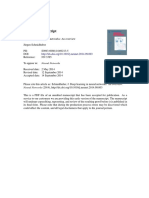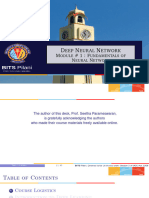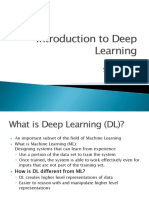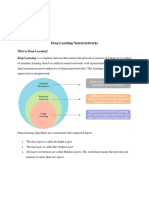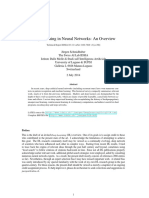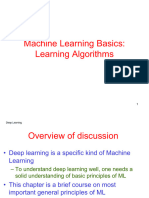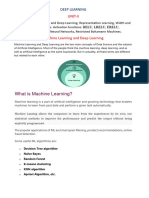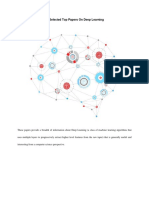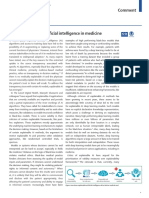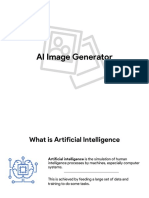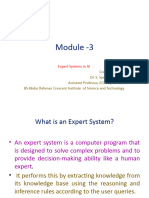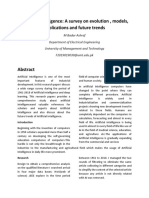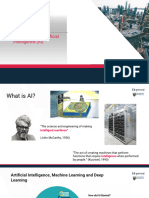0% found this document useful (0 votes)
109 views61 pagesArtificial Neural Network Course Slides
The AIS302 course on Artificial Neural Networks, taught by Dr. Ensaf Hussein, aims to provide students with an understanding of deep learning principles and practical experience in applying deep learning models. The course covers topics such as deep neural networks, optimization, sequence modeling, and generative models, with a project-based grading policy. Prerequisites include AIS301: Machine Learning, and students must attend 75% of lectures to qualify for the final exam.
Uploaded by
Hana El GabryCopyright
© © All Rights Reserved
We take content rights seriously. If you suspect this is your content, claim it here.
Available Formats
Download as PDF, TXT or read online on Scribd
0% found this document useful (0 votes)
109 views61 pagesArtificial Neural Network Course Slides
The AIS302 course on Artificial Neural Networks, taught by Dr. Ensaf Hussein, aims to provide students with an understanding of deep learning principles and practical experience in applying deep learning models. The course covers topics such as deep neural networks, optimization, sequence modeling, and generative models, with a project-based grading policy. Prerequisites include AIS301: Machine Learning, and students must attend 75% of lectures to qualify for the final exam.
Uploaded by
Hana El GabryCopyright
© © All Rights Reserved
We take content rights seriously. If you suspect this is your content, claim it here.
Available Formats
Download as PDF, TXT or read online on Scribd
/ 61



















